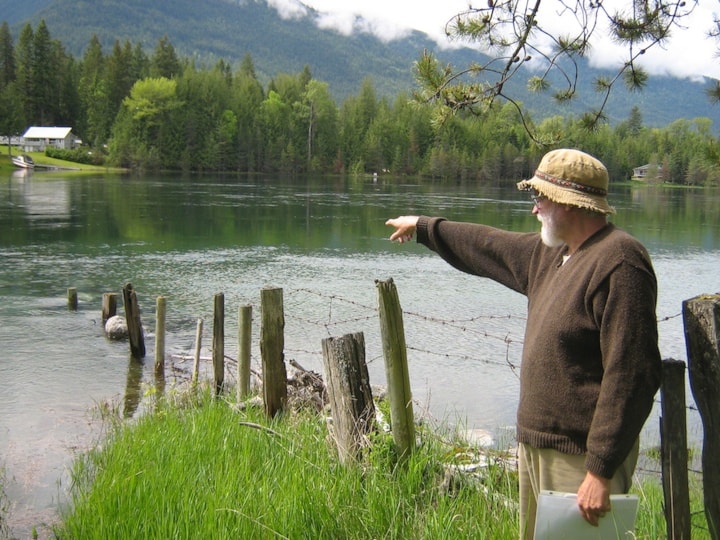Sixty-fourth in an semi-alphabetical series on West Kootenay/Boundary place names
Fraser’s Landing and the Fraser Narrows on Kootenay Lake were both named after Sydney Smyth Fraser (1867-1947) who bought 400 acres and settled there in 1906.
Fraser’s Landing was so called by May 1909, as evidenced by a caption in a photo album that belonged to Sydney’s brother, although its first newspaper mention wasn’t until the Nelson Daily News of April 15, 1913. It was on the CPR timetable by May 1914.
Fraser’s Landing was notable as the western terminal of the Kootenay Lake ferry from 1931-47. The name fell into disuse after the terminal moved slightly east to Balfour, and today most people would consider Fraser’s Landing to be part of Balfour.
The actual landing is at the end of Heuston Road, which somehow failed to be named Fraser Road.
S.S. Fraser’s grandnephew Alistair Fraser has a blog entry devoted to Fraser’s Landing on his website.
 Franklin
Franklin
This mining camp about 70 km north of Grand Forks was first mentioned in the Cascade Record of September 16, 1899: “J.P. Grabner returned last Sunday from a trip to the new and promising Franklin camp …”
The earliest claims, the Banner and McKinley, were apparently staked in the summer of 1896 by Frank McFarlane (1865-1935), after whom the camp was named, but the 1901 BC Minister of Mines report noted “This camp has been little known heretofore, owing to its inaccessible situation …”
The Grand Forks Gazette of April 29, 1905 pinpointed its confusing location: “Franklin Camp … is situated on the west bank of the east fork of the north fork of the Kettle River, and is divided into two sections by Franklin Creek.”
Almost exactly a year later, the Nelson Daily News noted a townsite was being surveyed at Franklin. A post office opened there in December 1906, but closed after less than a year. The postmaster and Franklin Townsite Co. president was Bernard Lequime, who registered Kelowna’s townsite plan in 1892 and heavily promoted that community, where Bernard Avenue is named after him.
According to Jim and Alice Glanville in Grand Forks: Where the Kettle River Flows, “With the Kettle Valley Railway expected to be built to Franklin, Bernard Lequime … planned a large hotel for that area, and in June 1906 liquor license applications were granted for hotels at Franklin …”
Franklin never really was much of a community, but remained an active mining centre while the Hecla Mining Co. and its lessees worked the Union, Maple Leaf, and Homestake properties from 1927 onward. (Mining companies continue to poke at them from time to time.)
Another nearby townsite, called Upper Franklin, or Gloster City, will be dealt with later in this series.
Frank McFarlane died in Edgewood and is buried there. Mount Franklin is also named after him.
Previous installments in this series
Applegrove, Appleby, and Appledale revisited
Bakers, Birds, and Bosun Landing
Bannock City, Basin City, and Bear Lake City
Bealby Point (aka Florence Park) revisited
Boswell, Bosworth, Boulder Mill, and Broadwater
Brooklyn, Brouse, and Burnt Flat
Camborne, Cariboo City, and Carrolls Landing
Carmi, Cedar Point, Circle City, and Clark’s Camp
Carson, Carstens, and Cascade City
Christina City and Christian Valley
Cody and Champion Creek revisited
Champion Creek revisited, again
Columbia City, Columbia Gardens, and Columbia Park
Crawford Bay and Comaplix revisited
Dawson, Deadwood, and Deanshaven
English Cove and English Point
Forslund, Fosthall, and Fairview
Fort Shepherd vs. Fort Sheppard, Part 1
